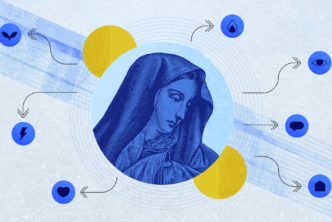By Stephen Nichols, adapted from Welcome to the Story: Reading, Living, and Loving God’s Word.
***
How Dietrich Bonhoeffer came to write Life Together
In 1935, the German National Church threw its support behind the Nazi party. Troubling to many in the Church, a group met at the city of Barmen, drawing up The Barmen Declaration and forming what came to be called the Confessing Church. This new church would confess allegiance to Christ only, not to the state. The Confessing Church also decided to establish four seminaries to train pastors for this new movement.
They settled on the city of Finkenwalde, then in Germany and now in Poland, as the place for one of these seminaries. And they settled on Dietrich Bonhoeffer as its director. He was just about to turn thirty and already had an impressive career.
The seminary existed for just over a year before the Gestapo shut it down, arrested most of its students, and sent others into hiding. Bonhoeffer went to his parents’ home and wrote a book about it all, Life Together. In a few years, Bonhoeffer himself would be arrested, and in a few years still he would be hanged at Flossenbürg concentration camp, just a handful of days before that camp would be liberated. All of this is to say that what Bonhoeffer has to tell us in Life Together is well worth hearing.
Dietrich Bonhoeffer on Christianity
Bonhoeffer stresses many ideas in the book, with that of community topping the list. “Christianity means community,” he tells us. For Bonhoeffer, community circles around our common union that we have in Christ. Living together, learning together, worshiping together, suffering together, Bonhoeffer and his students learned a great deal about true community.
One thing Bonhoeffer learned, though, is that community is not isolated to one time and one place. The Christian community is global, blowing apart any geographical boundaries. But, Bonhoeffer also learned that the Christian community is historical, transcending the barriers of time. . . . The biblical story is our story. It is not the story of biblical characters written down for us. It is the story of us, because we are all part of the Christian community. . . .
Here’s how Bonhoeffer expresses the way in which the Word of God becomes our story: We become a part of what once took place for our salvation. Forgetting and losing ourselves, we, too, pass through the Red Sea, through the desert, across the Jordan into the promised land. With Israel, we fall into doubt and unbelief and through punishment and repentance experience again God’s help and faithfulness. All this is not mere reverie but holy, godly reality. We are torn out of our own existence and set down in the midst of the holy history of God on earth. There God dealt with us, and there He still deals with us, our needs and our sins, in judgment and grace.
Then he adds a final exclamation point, “Only in the Holy Scriptures do we learn to know our own history.”1 The Bible is our story because we are part of and connected to the Christian community.2
***
This post is adapted from Welcome to the Story: Living, Loving, and Living God’s Wordby Stephen Nichols.
The headings and title of this post are the additions of the editor. The author’s views do not necessarily represent those of Faithlife.
- Dietrich Bonhoeffer, Life Together (New York: Harper One, 1954), 53–54.
- Stephen Nichols, Welcome to the Story: Living, Loving, and Living God’s Word (Wheaton, IL: Crosway, 2011), chap. 1.







